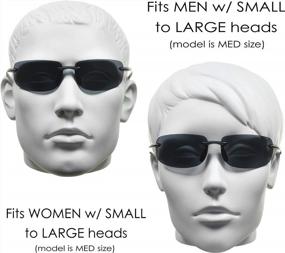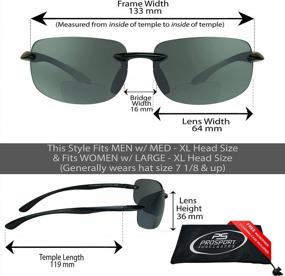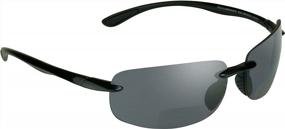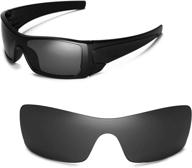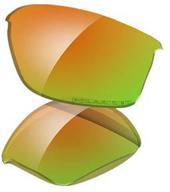Description of ProSPORT BIFOCAL Reader Sunglasses Rimless Men Women HD Amber Smoke Yellow Lens
Imported. Composite frame. Polycarbonate lens. Non-Polarized. Scratch Resistant Coating coating. Lens width: 64 millimeters. Bridge: 16 millimeters. Arm: 119 millimeters. INCREDIBLY FLEXIBLE FRAMES & NOSE PIECES : Stiff plastic sunglasses can pinch behind your ears. These bifocal glasses are extremely light weight and flexible, so they conform nicely around your head. You can wear these bifocals for hours while playing 18 holes of golf and not even notice they are on. Soft rubber nose pieces prevent slippage, so these polarized readers are perfect for cycling, tennis, baseball, and golf. IMPACT RESISTANT POLYCARBONATE LENSES : When shopping for sunglasses, eye protection should always be a priority. Polycarbonate is an impact resistant thermoplastic that is virtually unbreakable and extremely scratch resistant. Have you tried to break a CD (compact disc) before? It can’t be done! CDs are made of polycarbonate. Your eyes are worth every penny you spend on sunglasses. DANGERS OF BLUE LIGHT : Blue light exposure increases the risk of macular degeneration. Blue light penetrates all the way to the retina (the inner lining of the back of the eye) and can potentially damage the light-sensitive cells in the retina. These HD Bifocal reading glasses can reduce blue light making it safer to look at computers and handheld devices. YELLOW NIGHT VISION LENSES : Yellow lenses reduce the halo effect around lights at night. They also enhance colors at night and sharpen vision. You will often find Shooting glasses with yellow tint to help increase contrast and clarity. Yellow sunglasses are excellent for motorcycle riding and cycling at night. NEAR INVISIBLE BIFOCAL LINE : We all will need to wear bifocal eyewear at some point in their lives. But does the whole world need to notice those unsightly bifocal lines? The magnified reading area at the bottom of these lenses are injection molded, which means you can’t feel the bifocal line on the lenses. The front of the lens is smooth, like nothing is there. It’s visible from the back of the lens, however, but not so much on the front of the lens.
Hide



